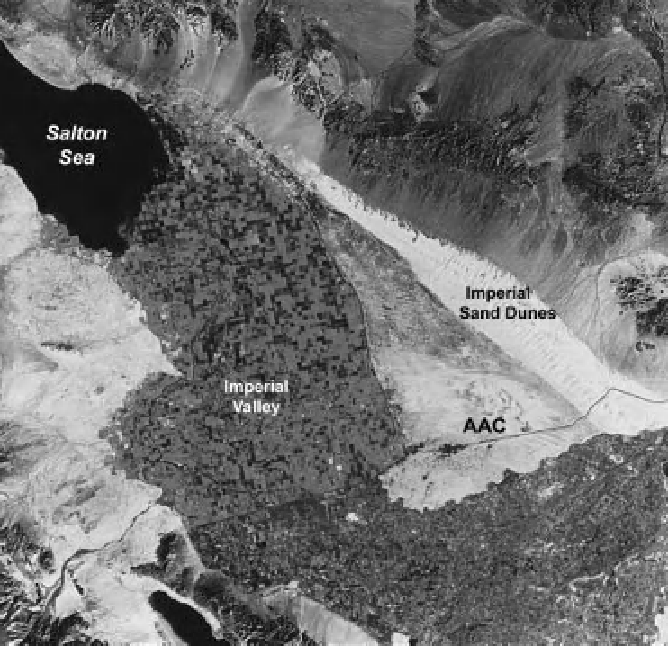Geoscience Reference
In-Depth Information
Figure 11-14.
Imperial Valley, southern California and northern Mexico (see Color Plate 11-14). The All American
Canal (AAC) enters right side of scene and l ows westward just north of the U.S.-Mexican border. This is the last
tap from the Colorado River on the U.S. side of the border. Bright red irrigated cropland is evident in the Imperial
Valley of the United States, but crops have less irrigation water in Mexico. Landsat false-color composite; TM bands
2, 3 and 4 color coded as blue, green and red. Active vegetation appears red and pink. Acquired April 1983;
adapted from NASA Goddard Space Flight Center.
eastern United States were built for transporta-
tion purposes, whereas canals in the western
part of the country are primarily for irrigation
(Fig. 11-14).
A similar canal-building boom took place in
Europe during the eighteenth and nineteenth
centuries. The result is an interconnected system
of waterways that allows shipping and pleasure
boating throughout most of western and central
Europe. Locks are the conventional means to
change water levels, but many other ingenious
techniques have been used to lift or lower boats
from one level to another (Figs. 11-15 and
11-16).
Recreational uses of wetlands provide signii -
cant economic development opportunities and
incomes to local regions. Involving local and
indigenous populations in tourism may provide
dual benei ts in terms of generating local employ-
ment opportunities and promoting conservation
goals (Scheyvens 1999). This also serves to alle-
viate often fraught relationships between mar-
ginalized indigenous populations and top-down
government conservation and management
efforts. Studies have documented successes of
participatory management in ecotourism efforts
(Cater 1994; Drumm and Moore 2005; Boojh,
Patry and Smart 2008). However, as Scheyvens
(1999) cautioned, not all ecotourism efforts may
end up empowering local people or recycling
revenue through local economies. Even so, eco-
nomic multiplier effects suggest that wetland
sites support additional service sector activities
including hotels, inns, guides, restaurants, and
recreational venues beyond income generated
through fees and permits to these sites.





